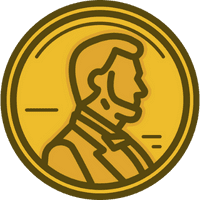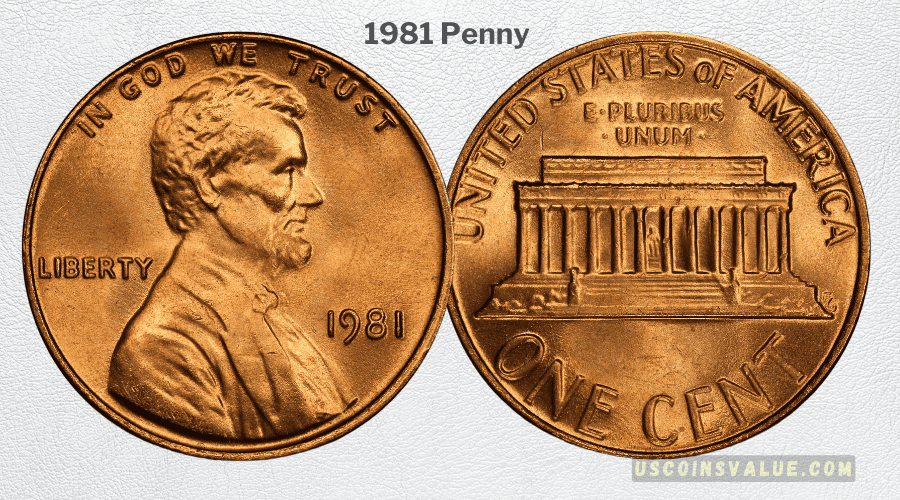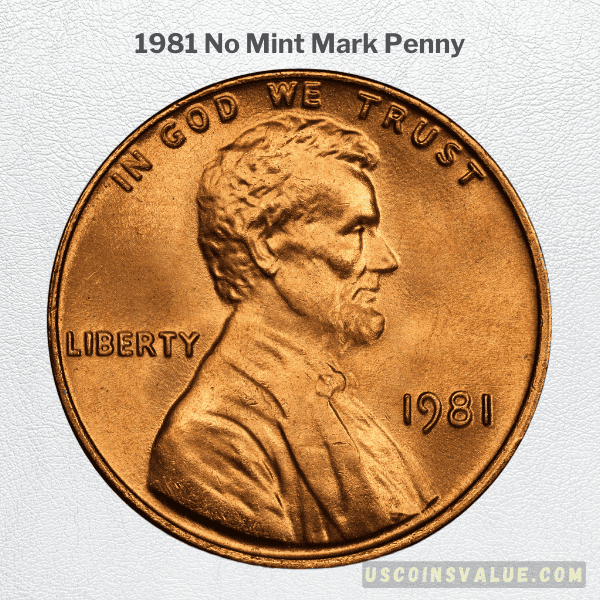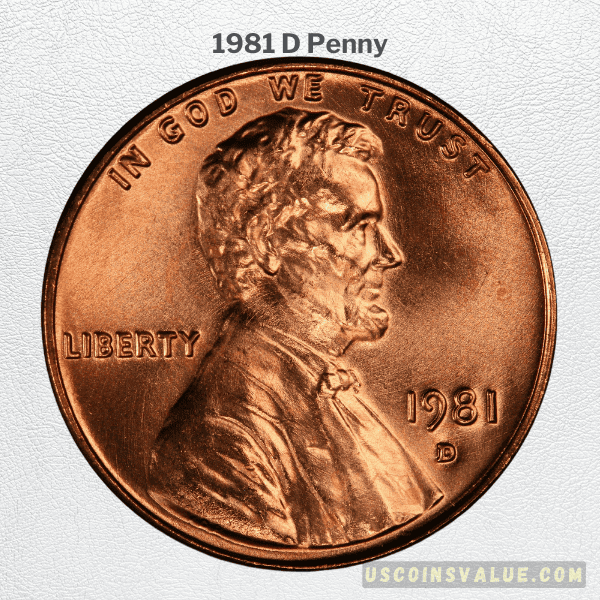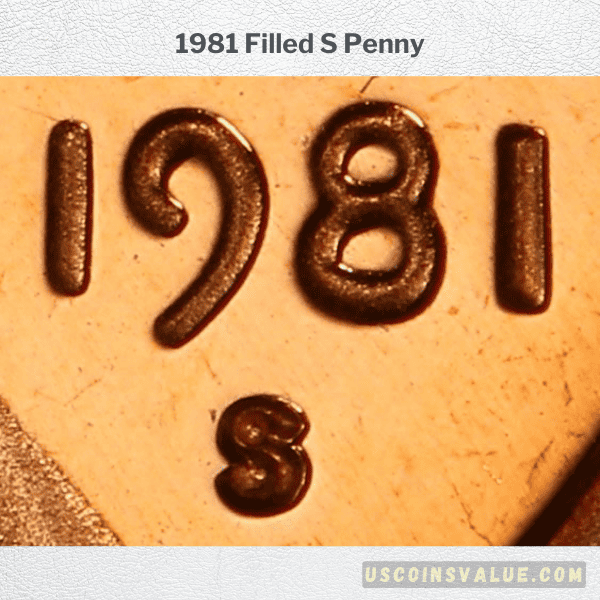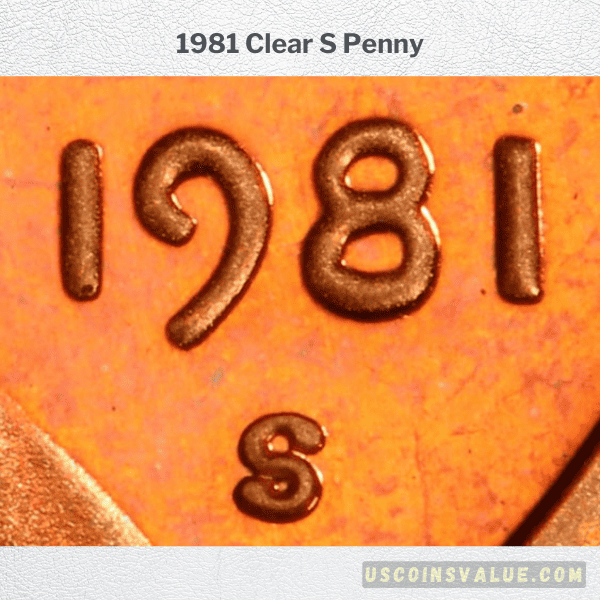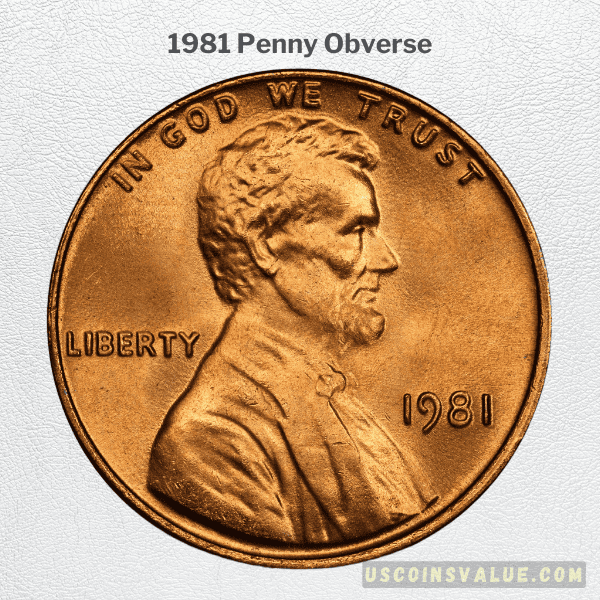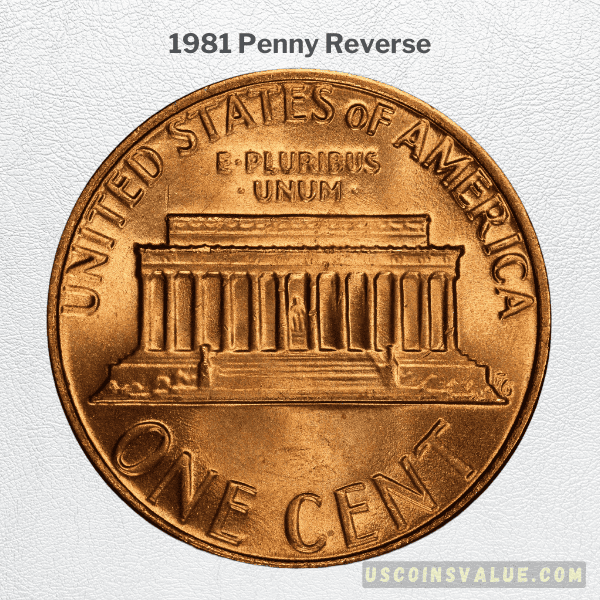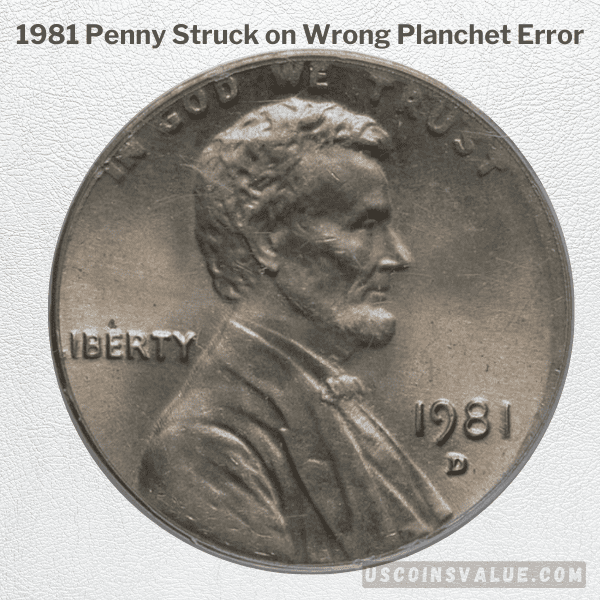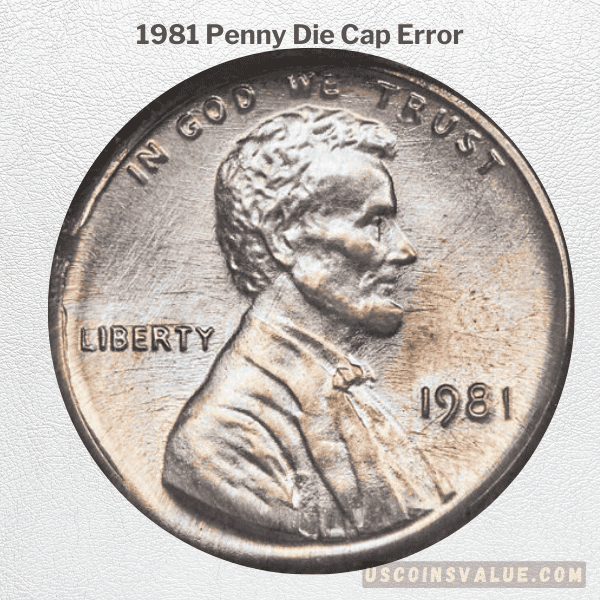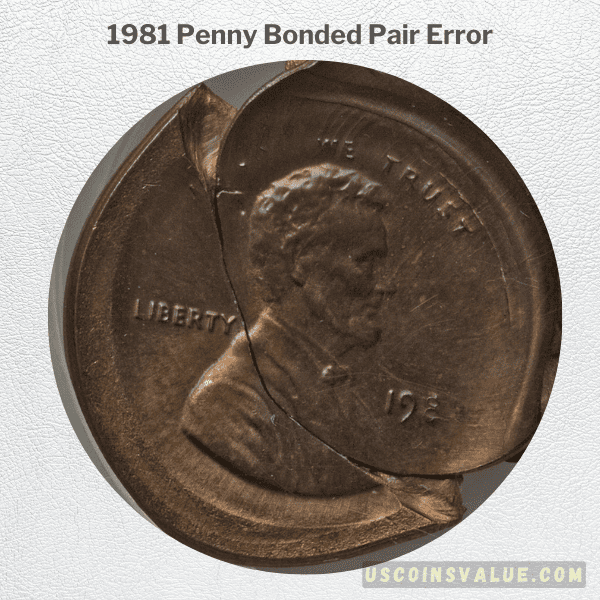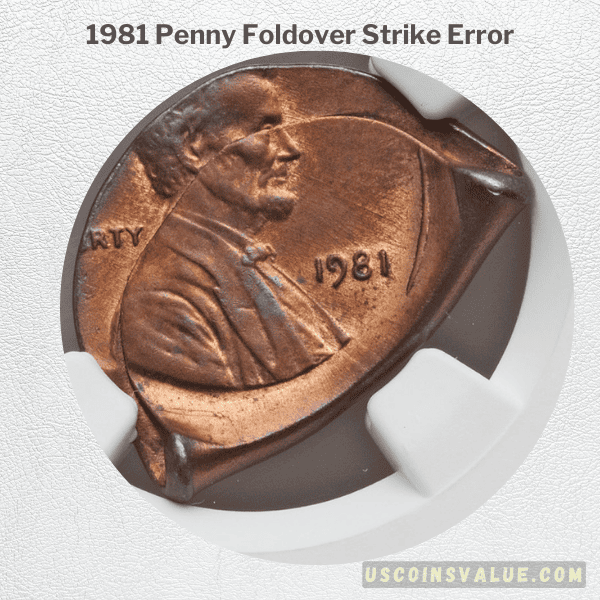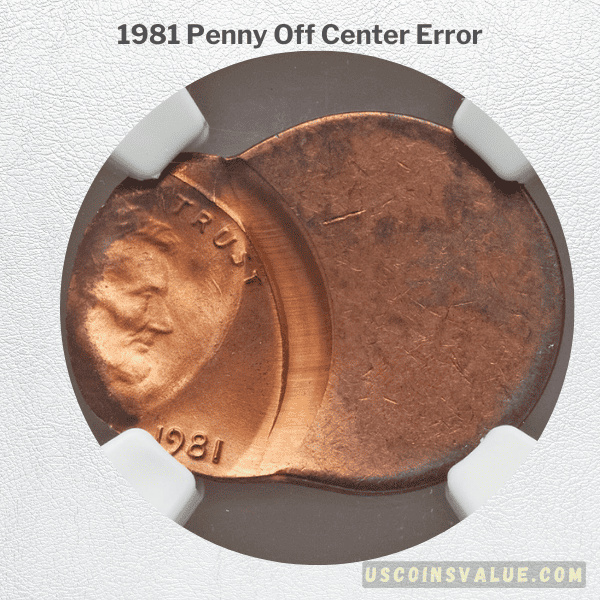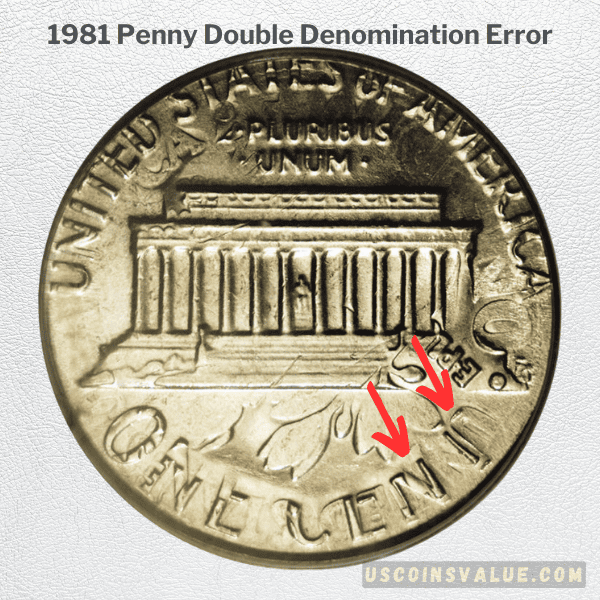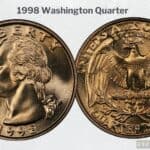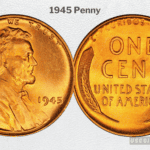With over 12 billion 1981 pennies minted, these coins are not rare. However, that does not mean they are not valuable. 1981 pennies are rare in their most pristine conditions, MS67 or higher. Hold onto any 1981 penny grade MS68 or higher since it could be worth thousands of dollars.
Rare mint errors like ‘Wrong Planchet’ and ‘Off Center’ errors increase the value of these coins by hundreds to thousands of dollars. Also, unlike many other years, Proof pennies from 1981 pennies are highly valuable in their highest grades, PR70, fetching upwards of $2,000 at auctions.
Currently, the most valuable 1981 pennies ever sold are the 1981-S Lincoln Cent (Proof) Type 1 that sold for $8,050 in 2003, and the 1981 Lincoln Cent with a rare error that sold for a whopping $13,200 in 2021 at Heritage Auctions.
Read on to know how much these coins are valued at lucrative auctions, online marketplaces, and the open market today.
1981 Penny Value Summary
Below is a summary of the 1981 penny value chart showcasing how valuable various varieties are in the current open market:
| 1981 penny Value
(Price Guide) For Various Grades According to PCGS and NGC |
1981
(MS) |
1981-D
(MS) |
1981-S Type 1 (Filled S) – Proof
(PR) |
1981-S Type 2 (Clear S) – Proof
(PR) |
| 60 | $0.50 | $0.10 | $4 | $10 – $25 |
| 61 | $0.75 | $0.25 | $4 | $12 – $27 |
| 62 | $1 | $0.55 | $4 | $14 – $30 |
| 63 | $2 – $4 | $0.75 – $6 | $4 | $15 – $32 |
| 64 | $3.50 – $10 | $1 – $8 | $4 | $18 – $35 |
| 65 | $5 – $14 | $2.50 – $22 | $4 | $26 – $40 |
| 66 | $7.50 – $42 | $5 – $38 | $5 | $32 – $45 |
| 67 | $10 – $215 | $7.50 – $175 | $6 | $50 – $55 |
| 68 | $5,000 | N/A | $8 | $60 – $70 |
| 69 | N/A | N/A | $15 | $175 – $225 |
| 70 | N/A | N/A | $2,500 | $7,500 |
Note:
- The N/A in columns without a price guide does not mean the coins are rare. Instead, it shows that there isn’t enough data or coins to publish an average price estimate.
- The grades (60 – 70) represent the particular coin’s grading prefix, i.e. MS60-MS70 for Mint State (MS) Regular/Business Strike coins and PR60-PR70 for Proof pennies.
Background of the 1981 Penny
The 1981 penny, officially known as the 1981 Lincoln Cent, is part of the Lincoln Cent: Memorial Reverse series that was produced between 1959 and 2008. These are among the most popular and recognizable coins in the world.
The Lincoln Cent series started out as Lincoln Cent: Wheat Reverse in 1909 to celebrate the 100th anniversary of President Lincoln’s birth. The obverse featured Lincoln’s image, and the reverse had the iconic Wheat Ears.
In 1959, the reverse of these coins was changed to that of the Lincoln Memorial to celebrate the 150th anniversary of his birth. The obverse remained the same. This design stayed on until 2008, when it was replaced by the Lincoln Bicentennial One Cent program created to celebrate the 200th anniversary of his birth.
As part of the Lincoln Memorial Center, the 1981 penny features the classic Abraham Lincoln bust at the obverse, designed by Victor David Brenner in 1909. The reverse is a design that features the Lincoln Memorial building, designed by Frank Gasparro.
Apart from the Memorial, the 1981 Cent features a scaled-down figure of Abraham Lincoln seated at the center of his building.
The only notable history from the 1981 pennies is that this was the last year in the 1980s when pennies would be made from a 95% copper and 5% zinc composition.
The metal composition used in making the Lincoln cents was changed in the following year. 1982 pennies were made from copper-plated zinc instead of the traditional 95% copper. You can differentiate the two cents by weighing them: the 1981 bronze cents weigh 3.11 grams, and the 1982 copper-coated zinc cents weigh 2.5 grams.
However, it’s important to keep in mind that not all 1982 pennies were made of copper-plated zinc. The exception to this rule is the 1982-S Lincoln Proof Cent from San Francisco, made from 95% copper. It is a rare variety known for its nonconformity. Its highest auction price was $7,050 for PR70 in 2013.
1981 Penny Features
1981 penny specifications:
- Series: Lincoln Cent, Memorial Reverse (1959 – 2008)
- Year of Make: 1981
- Mint Branch: Denver, Philadelphia, and San Francisco
- Composition: 95% Copper and 5% Zinc
- Weight: 3.11 grams
- Diameter: 19 millimeters
- Thickness: 1.52 millimeters
- Edge: Smooth/Plain
- Face Value: $0.01
1981 Penny Mint Varieties
All three major U.S. mints were used to produce the 1981 pennies. The various mint varieties from these branches include:
1. 1981 No Mint Mark Penny
- Mint Branch: Philadelphia
- Mintage: 7,491,750,000
Made in Philadelphia, these coins are Regular Strike coins – made for circulation and business use. They do not have mint marks and are the most minted 1981 penny variety.
Depending on their usage and mint conditions, these coins can either be Red (RD), Red Brown (RB), or Brown (BN) in color. The change in color shows how exposed the coin has been to the elements.
Red indicates mint condition in an enclosed coin capsule, meaning the coin has been kept in pristine conditions for decades. A Red Brown coin is one that has been slightly circulated hence slightly degraded, whereas a Brown coin is a highly circulated coin in the least pristine condition.
2. 1981 D Penny with Mint Mark
- Mint Branch: Denver
- Mintage: 5,373,235,677
Made in Denver (D), the 1981-D pennies are Regular Strike coins with a ‘D’ mint mark on the obverse. They also come in Red (RD), Red Brown (RB), and Brown (BN).
3. 1981-S with Mint Mark: Type 1 – Filled S (DCAM)
- Mint Branch: San Francisco
- Mintage: 4,063,083
Proof pennies in 1981 were only made in San Francisco. These coins have a Filled ‘S’ mint mark on the obverse. Filled is used to show that the ‘S’ is not very clear due to a minting mistake that caused the production of an ‘S’ that was thicker and less precise.
1981-S pennies are Proof Coins featuring the most superior finishes. They were made specifically for numismatic purposes and coin collectors, not for circulation like the 1981 and 1981-D pennies.
The DCAM designation refers to Deep Cameo. It is used to refer to coins with a frosted design (Cameo) effect that is particularly pronounced and stands out against the 1981 penny’s background. DCAMs of any year or denomination are the highest-quality coins you will ever see.
4. 1981-S with Mint Mark: Type 2 – Clear S (DCAM)
- Mint Branch: San Francisco
- Mintage: 3,857,479
1981-S Penny Type 2 are similar to 1981-S Type 1 apart from one key difference, the ‘S’ mint mark on the obverse is clearer and more detailed without any smudges or imprint leakages.
1981-S Penny Type is also a DCAM Proof coin with a very high quality finish.
Obverse and Reverse Design
The obverse (heads) features Abraham Lincoln’s bust image facing the right. Inscriptions include:
- IN GOD WE TRUST – above the image
- LIBERTY – on the left of the image
- ‘1981’– on the right of the image
- ‘D’ or ‘S’ Mint Mark – appears under ‘1981’
The reverse (tails) features the image of the Lincoln Memorial building. Inscriptions include:
- UNITED STATES OF AMERICA – above the image
- E PLURIBUS UNUM – between the image and the UNITED STATES OF AMERICA
- ONE CENT – below the image
Why Is The 1981 Penny So Valuable?
The 1981 penny, in general, is not considered exceptionally valuable, especially when compared to older or rarer coins. However, there are specific factors that can make 1981 pennies worth money, the number one factor being the coin’s grade and condition:
1. Coin Grade
The Sheldon’s scale is the industry standard for grading coins like the 1981 penny. The scale is from 1 – 70, where a coin’s condition is ranked between a number from 1 to 70 with a prefix (MS or PR) that shows if it’s a Regular Strike coin (MS) or a Proof Coin (PR).
When looking for 1981 pennies worth your effort, you should focus on these two categories:
- MS (60 – 70) – stands for Mint State and is used to show the condition of circulation coins from grades 60 to 70.
- PF (60 – 70) – stands for Proof and is used to show the grade of Proof uncirculated coins with the most superior finish.
A PR70 penny is a Proof (PR) coin with the highest possible grade. MS68 penny is a Regular Strike coin in Mint State (MS) with a 68 grade on the Sheldon Scale. The higher the grade, the better.
Most 1981 pennies are below MS66 due to how long they have been in circulation. These makes high grade coins in MS67 or higher worth your time and attention.
For proof coins, most are in pristine condition since they weren’t put into circulation. Therefore, the most valuable of the set is a PR70 coin.
It is important to note that usually, Proof coins do not sell for much. This is because they are specifically made to be sold directly to coin collectors, thereby undervaluing their collectability.
However, the case is different for the 1981 Proof coins from San Francisco because the mint produced two exciting varieties – Type 1 and Type 2.
Coin collectors looking for Lincoln Cents would love to have these two types of cents to complete their sets. This increases their value since they are now highly collectible, costing more than $2,000 at PR70.
Regular business strike coins are rare in MS67 or higher. This is because they have been in circulation for decades but also because the Denver and Philadelphia mints did not produce the highest quality strikes in 1981. You will notice blemishes and scuffs on even the highest-graded regular strike coins.
2. 1981 Penny Errors
Mint errors that are valuable on the 1981 penny include – Wrong Planchet Error, Off Center, Bonded Pair, Die Cap, and Foldover Strike errors. More on the specifics later in this article.
When looking for valuable coins, focus on the above errors. Common errors like die breaks and double strike errors are not valuable, costing less than $10 in online marketplaces.
3. Demand In The Market At Time Of Sale
Like any other market, the value of the 1981 penny fluctuates with changes in demand. Some varieties, like the 1981 Proof coins, can vary in price compared to what collectors are looking for at the time of the sale.
Feel free to take a look at the PCGS and NGC price guides to keep up with how the 1981 pennies are trending over time.
1981 Penny Value
Each 1981 penny variety has a different value depending on its condition, grade, and demand at the time. Below is an in-depth dive into how much these coins are valued currently, as well as their highest realized auction prices:
1. 1981 No Mint Mark Penny
According to Greysheet, the value of the 1981 penny made in Philadelphia is between $0.35 and $115. USA Coin Book values at $1.16 or more in MS65 grade or higher. Its melt value is $0.0244, and the prices go higher if they are in rarer conditions like MS68 or above.
The most valuable 1981 no mint mark pennies are in MS68. Only five of these coins have been graded by PCGS since 1981, each is valued at $5,000.
MS67 or lower are worth less than $220 unless they feature a rare valuable error.
Historical auction records for the 1981 no mint mark penny:
| Grade | Price | Firm | Sale Date |
| MS68RD | $3,000 | eBay | 2022 |
| MS67+ | $1,058 | Heritage Auctions | 2016 |
| MS68RD | $1,020 | eBay | 2023 |
| MS67+ RD | $700 | eBay | 2019 |
| MS66BN | $700 | eBay | 2018 |
2. 1981 D Penny Value
This is the least valuable variety among the 1981 pennies. It features the lowest grades in the series due to the low production quality at the Denver Mint.
The most valuable are in MS67, and none have ever been graded at MS68.
According to Greysheet, the value of the 1981-D penny is between $0.35 and $169. USA Coin Book values at $1.16 or more in MS65 grade or higher. Its melt value is $0.0244, and the prices go higher if they are in rarer conditions like MS68 or above.
Historical auction records for the 1981-D penny:
| Grade | Price | Firm | Sale Date |
| MS67+ RD | $5,170 | Heritage Auctions | 2017 |
| MS67RD | $493.50 | Heritage Auctions | 2016 |
| MS67RD | $460 | Heritage Auctions | 2008 |
| MS67RD | $345 | Stack’s Bowers | 2010 |
| MS67 | $304 | eBay | 2012 |
3. 1981 S Penny No Mint Mark: Type 1 – Filled S
Of the two types of Proof coins, this is the most valuable. According to the USA Coin Book, the 1981 S Lincoln Memorial penny: Type 1 is currently valued at $3.38 or more in PR65 grade.
Less than 50 have been graded at PR70, thereby increasing their worth up to $2,500+. On the other hand, thousands of PR69 or lower have been graded and all of them are valued below $20.
Highest historical auction records for the 1981-S Penny (Proof) Type 1:
| Grade | Price | Firm | Sale Date |
| PR70 | $8,050 | Heritage Auctions | 2003 |
| PR70 | $4,113 | Heritage Auctions | 2013 |
| PR70 | $3,850 | Great Collections | 2013 |
| PR70 | $3,737.50 | Heritage Auctions | 2005 |
| PR70DCAM | $3,400 | eBay | 2021 |
4. 1981 S Penny No Mint Mark: Type 2 – Clear S
According to the USA Coin Book, the 1981 S Lincoln Memorial penny: Type 2 is currently valued at $17 or more in PR65 grade. On PCGS, the highest grade available is PR70 but only three coins have ever been graded at that level, making it more valuable than PR70 of Type 1, valued at $7,500.
PR69 are not rare but can still fetch a good penny at about $175 – $225.
We are yet to see the auction prices for the PR70 coin since none has been sold yet.
Highest historical auction records for the 1981-S Penny (Proof) Type 2:
| Grade | Price | Firm | Sale Date |
| PR69 DCAM | $862.50 | Heritage Auctions | 2004 |
| PR69 DCAM | $718.75 | Heritage Auctions | 2003 |
| PR69 DCAM | $632.50 | Heritage Auctions | 2006 |
| PR69 DCAM | $586.50 | Heritage Auctions | 2003 |
| PR69 DCAM | $575 | Bowers & Merena | 2007 |
Top 6 Valuable 1981 Penny Errors
Below is the 1981 d penny error list:
1. Struck on Wrong Planchet Error
‘Wrong Planchet’ error is a mistake that occurs when a coin is struck on a planchet (the metal disc from which a coin is struck) intended for a different coin denomination. This produces a coin with a design intended for a different coin denomination instead of a cent.
Several different types of wrong planchet were accidentally used in the making of the 1981 penny, leading to valuable coins like the 1981 Cent ‘Struck onto 1981-P Kennedy Half Dollar’.
This brilliant uncirculated coin sold for $13,200 at Heritage Auctions in 2021. It is the most valuable 1981 penny of all time.
The coin is a one-sided MS64 penny that was formed when a penny planchet was mistakenly struck onto a planchet intended for a 1981 Kennedy half dollar (50C). This type of error is highly unusual because the cent is significantly smaller in diameter than the half dollar, creating an illusively appealing coin.
Another popular variety is the ‘Struck on a 10C planchet’ error, where 1981 cents were struck on a 10C planchet instead of a cent planchet. Some of the highest auction prices for this are $810 in 2021, $805 in 2012, and $720 in 2022.
Some 1981 cents were also ‘Struck on a 1981-D Dime’. One coin with these error sold for $822.50 in 2013 and another for $633.50 in 2011.
2. 1981 Penny ‘Die Cap’ Error
Die Cap errors are highly rare errors that occur when a coin that has been struck fails to eject and gets stuck in the press.
The stuck coin now acts as a new striking surface for subsequent planchets. The new planchets will warp the coin around one of the die faces, causing a ‘die cap’ with the design of the capped die to be struck onto the depths of the cylinder.
The die cap often happens with a planchet of the same denomination (One Cent coins), however die caps can also occur alongside other planchets. The latter are the more valuable die cap coins.
An example of these are the 1981 Cent ‘Die Cap on 5C planchet’ coins that sold for $5,820 in 2021 and $4,320 in 2023. These coins formed when a nickel (5C) planchet was used to strike a die cap formed on a penny (1C) die – essentially a die cap error and a wrong planchet error all in the same coin.
3. Bonded Pair Error
A bonded pair error happens when two or more coins are struck at the same time on one die, thereby bonding them together as a pair. An example is the MS64RD 1981 Cent ‘Bonded Pair’ that sold for $1,762.50 in 2016.
4. Foldover Strike Error
Foldover errors occur when the planchet is not properly fed into the coining press or there is a malfunction of machinery inside the press. Due to the improper feeding, a part of the planchet’s edge gets folded over, creating a fold in the coin’s metal.
These foldover strike errors can vary in severity, and their value depends on factors like the extent of the fold and the visibility of the error.
Examples include the 1981 Lincoln Cent ‘Foldover Strike’ in MS66RB grade sold for $1,320 in 2023, another for MS65RB sold for $1,057 in 2015, and another MS64RB for $810 in 2019 at Heritage Auctions.
5. Off Center Errors
Off-center errors are common in many denominations but still valuable, costing more than $100 if the error is more prominent.
The error occurs when the coin die fails to align properly with the blank planchet before striking, resulting in part of the design being struck off-center. This error can happen in various degrees, ranging from slightly off-center to severely off-center.
The highest auction record for a coin with this error is the MS64RB 1981 Lincoln Cent ‘Tripe Struck, 50% and 70% Off Center’ sold for $1,035 in 2009. It is a coin that was struck three times – with the second strike 50% off center at 8 o’clock relative to first strike and the third strike at 70% off center at 10 o’clock.
Another example is a MS65RD 1981 ‘Double Struck, Both Off Center, Second Strike flip Over’ sold for $384 in 2020 and the MS64RB ‘Double struck flip over, 2nd strike, 85% off-center’ sold for $223.25 in 2015.
6. Double Denomination Error
A double denomination error is often confused with ‘Wrong Planchet’ error.
Wrong Planchet error occurs when a coin is struck on a planchet intended for a different coin denomination. Double Denomination error, on the other hand, occurs when a coin is struck a second time with a die of a different denomination.
An example is the MS63RD 1981-D Lincoln Cent ‘Double Denomination on Struck Dime’ sold for $862.50 in 2006. This coin is a 1981 cent with a visible dime date and mintmark as well as a faint Roosevelt portrait (for the dime) sitting almost horizontally relative to Lincoln’s image.
What Penny Is Worth So Much Money?
The most valuable pennies are the 1944 steel wheat penny and the 1943 copper penny. These pennies are valuable because they are wartime coins and because they contain ‘wrong planchet’ transitional errors at the same time.
The 1943 copper penny is valued at $1 million at its finest grade, and one sold for $840,000 in 2021 at Heritage Auctions. On the other hand, the 1944 steel penny is worth $30,000 – $500,000; one sold for $408,000 in 2021.
How to Find the Valuable 1981 Pennies
For those in search of the most valuable 1981 penny, we recommend you first buy cheap 1981 Proof pennies in sets from the secondary market. Sift through them and look for the highest grades; aim for PR70 coins valued above $2,000 each.
It would be best to see the coins in person when buying from the secondary market and that the set you buy is unsearched and placed in an original U.S. Mint box. This will ensure you are the first person to pick through the coins and, therefore, have a better chance of striking the oil.
Proceed to use professional grading companies like NGC and PCGS to get a genuine authenticity certification that will guarantee a higher payday at auctions or online marketplaces.
